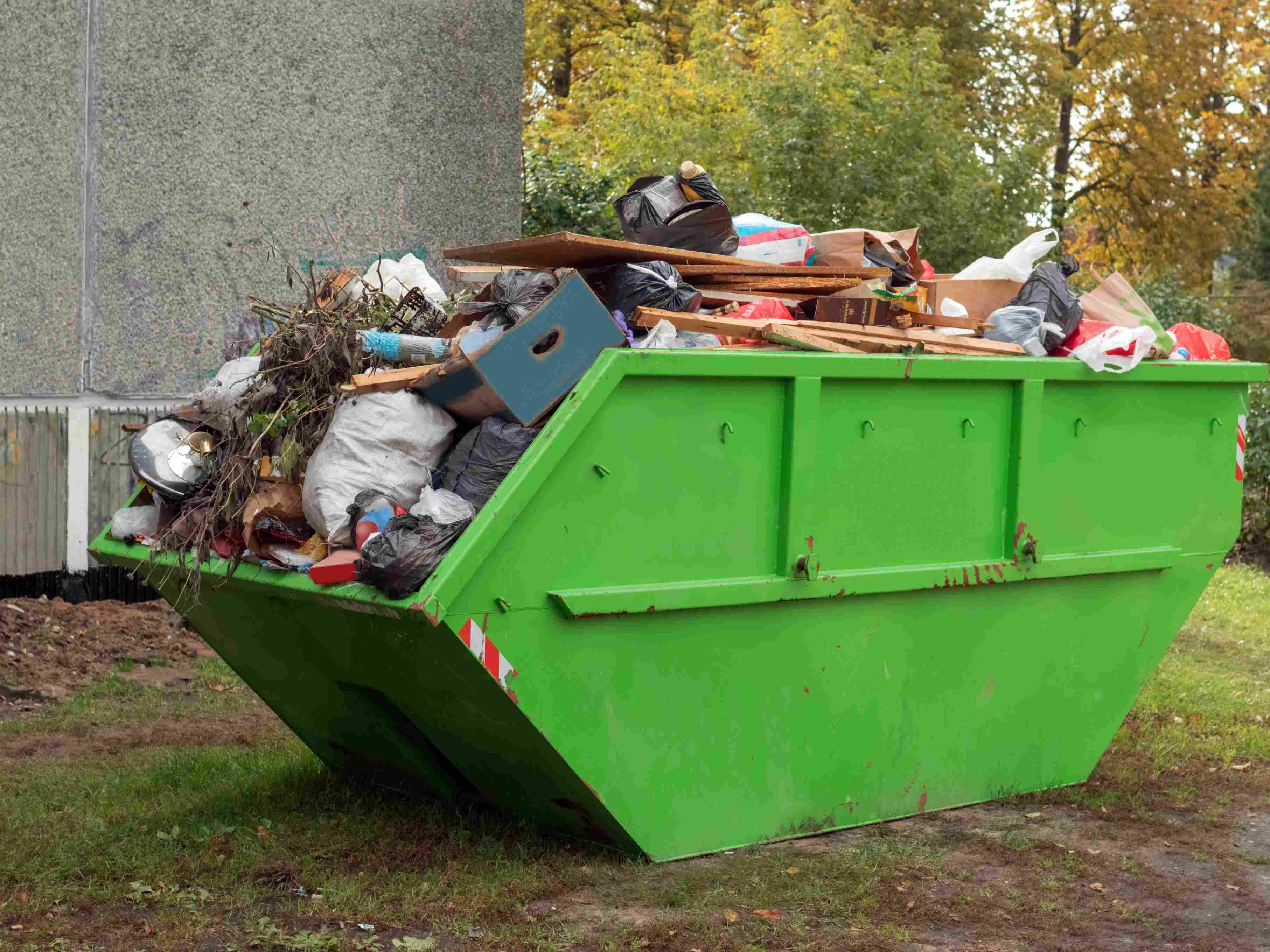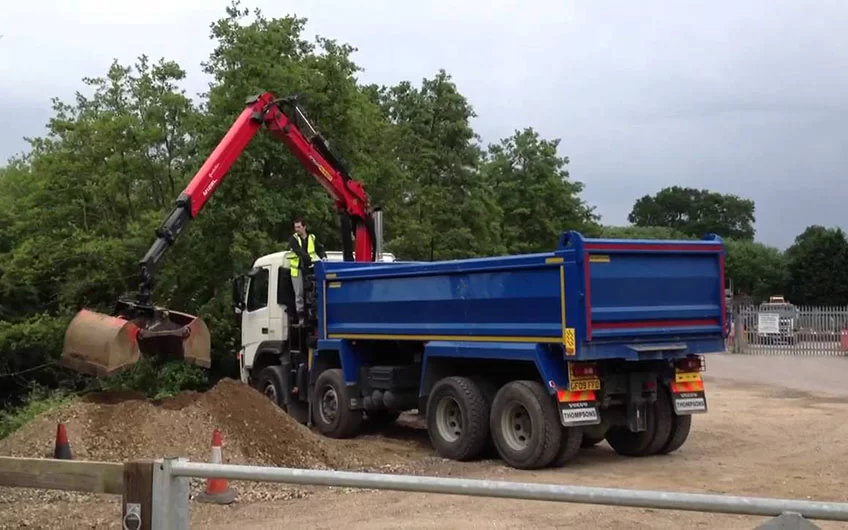Can You Put Plasterboard In Skips?

Can You Put Plasterboard in a Skip?
Can you put plasterboard in a skip? In short: not in a general, mixed-waste skip. At The Waste Group (formerly A&D Skips), we keep skip hire simple and compliant — and that includes following the Environment Agency’s rules on plasterboard. This guide explains exactly why plasterboard has to be kept separate, how to dispose of it legally, and the easiest options for homeowners and contractors across Dorset.
Plasterboard (gypsum/drywall) seems harmless during use, but when it’s mixed with biodegradable waste in landfill it can produce hydrogen sulphide (H2S), a toxic gas. That’s why UK regulations prohibit mixing gypsum-based materials with general waste. The good news: when kept separate, plasterboard is highly recyclable — and we make that process straightforward.
Why You Can’t Put Plasterboard in a Skip with General Waste
Plasterboard is made from gypsum (calcium sulphate dihydrate) layered between paper liners. In landfill conditions, gypsum can react with biodegradable waste to create hydrogen sulphide gas. Beyond the strong “rotten egg” smell, H2S is hazardous to health and the environment. To prevent this risk, the Environment Agency banned landfilling gypsum with biodegradable waste in July 2005.
For a short time a pragmatic allowance existed for “small amounts”, but research showed there’s no safe limit. In April 2009 the guidance was tightened: all sulphate-bearing wastes (including plasterboard) must be kept separate. You can read the position statement here: Sulphate-bearing waste: Determination of a concentration limit for separate disposal (EA).
What Happens if Plasterboard Is Found in a Mixed Skip?
If a mixed skip contains plasterboard, the load can be rejected at a transfer station or incur separation surcharges. Carriers (including us) are legally obliged to prevent gypsum contamination. To stay compliant and avoid delays, never add plasterboard offcuts, dust, or broken panels to a general skip.
So, How Can You Put Plasterboard in a Skip — Legally?
You can’t mix it — but you can use a dedicated solution. Here’s the simplest path to compliance and recycling:
1) Book a Plasterboard-Only Skip or Grab Bag
Choose a plasterboard-only container at checkout via our online booking system. We deliver, you load only gypsum-based waste, and we take it to authorised facilities for recycling. This is the fastest way to stay compliant.
2) Keep Plasterboard Separate On Site
Set aside a clearly marked area or bag for plasterboard only. Even “small bits” matter — dust and offcuts can contaminate an entire load. If you’re ever unsure, ask our team.
3) Recycle — Don’t Landfill
Recycling recovers gypsum for use in new boards, cement, and soil conditioners. It conserves raw materials and cuts carbon compared with sourcing virgin gypsum. See WRAP for circular-economy guidance.
4) Use Licensed Waste Carriers
Always choose a registered operator. Check the Government’s waste carrier register and keep your duty-of-care paperwork. We’ll provide all required documentation after collection.
How The Waste Group Handles Plasterboard
- Separate plasterboard-only skips and grab bags (easy to add at basket stage)
- Tracked collections with full compliance paperwork
- Authorised processing with maximum recycling
We cover Dorset and nearby areas including Wareham, Swanage, Dorchester, and Christchurch. If you’re planning a renovation and wondering again, “can you put plasterboard in a skip?” — the answer is yes, but only in a plasterboard-only container.
Environmental Benefits of Correct Plasterboard Disposal
Keeping plasterboard separate prevents H2S formation, protects staff and the public, and reduces leachate risks at landfill. Recycling gypsum also lowers demand for quarrying and can save significant CO2 versus using virgin materials. Proper segregation is a small step with a big environmental payoff.
Other Items You Can’t Put in a General Skip
Alongside plasterboard, certain materials are restricted or need specialist handling:
- Asbestos — see our asbestos disposal guide
- Paints, oils, solvents, chemicals, pressurised cylinders
- Electricals and batteries (WEEE)
- Medical waste
- Tyres and flammable/explosive materials
For more, read 9 items you should never put in a skip and our overview of what can and can’t go in a skip.
Legal & Safety Notes
Producers of waste have a legal duty of care under the Environmental Protection Act 1990. Using a licensed carrier and segregating gypsum ensures you comply. If you’re ever in doubt about whether you can put plasterboard in a skip for your specific project, call our team and we’ll advise.
Book Your Plasterboard-Only Skip
Ready to dispose of plasterboard safely? Get a fast quote and choose “Plasterboard” as your waste type via our online booking. Prefer to talk? Call us on 01202 247716 or contact us. We’ll keep your project compliant, sustainable, and hassle-free.
Frequently Asked Questions About Plasterboard Disposal
Can I put plasterboard in a general skip?
No. Plasterboard must be kept separate from mixed waste because it can generate hydrogen sulphide gas in landfill conditions. Use a plasterboard-only skip or bag.
Why is plasterboard restricted in skips?
Gypsum reacts with biodegradable waste to create hazardous gas. The Environment Agency prohibits landfilling gypsum with organic waste; segregation is mandatory.
How do I dispose of plasterboard legally?
Book a plasterboard-only container via our online quote, keep it separate on site, and we’ll recycle it at authorised facilities.
Can plasterboard be recycled?
Yes. Recovered gypsum is reused in new plasterboard, cement, and soil conditioners — reducing demand for virgin materials.
What if plasterboard accidentally goes in my mixed skip?
Contact us immediately. Loads may be rejected or incur separation fees. We’ll help arrange a compliant solution quickly.



